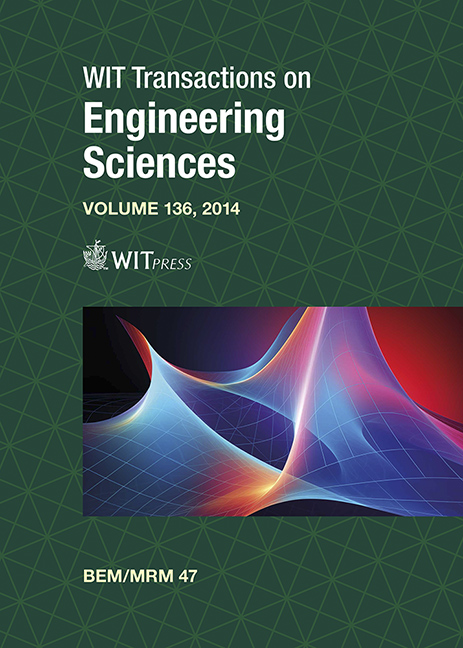SOLUTION OF CORROSION PROBLEMS USING THE BOUNDARY ELEMENT METHOD
Price
Free (open access)
Transaction
Volume
136
Pages
12
Page Range
15 - 26
Published
2024
Paper DOI
10.2495/BE470021
Copyright
Author(s)
NOUF R. ALTALHI, DANIEL LESNIC, STEPHEN D. GRIFFITHS
Abstract
In the practical setting of electrical impedance tomography, a current flux is injected through an electrode attached to the boundary and the boundary electrical potential is measured. This is numerically simulated by solving using the boundary element method (BEM) a direct problem for the Laplace equation with a nonlinear Butler–Volmer boundary condition over the boundary of a buried pipe that takes into account the principles of chemical corrosion. Our methodology is placed within the mathematical context of the Cauchy problem for the Laplace equation in a rectangular domain enclosing the corroded pipe whose boundary is inaccessible to prescribing any conditions on it. Given the Cauchy data, i.e. the specification of both the flux and potential, on an accessible portion of the boundary of the solution domain, the task is to determine the unknown potential and the flux on the inaccessible boundary of the pipe and the potential everywhere else inside the solution domain. This approach holds the promise of providing a non-invasive, accurate and effective means of detecting internal pipe corrosion, thus contributing significantly to maintaining safety standards in nuclear power plants. Since the inverse problem is ill-posed the resulting system of equations is ill-conditioned and the truncated singular value decomposition is employed in order to obtain stable and accurate numerical solutions. Other related inverse problems arising when modelling corrosion are also discussed.
Keywords
inverse problem, boundary elements, corrosion





